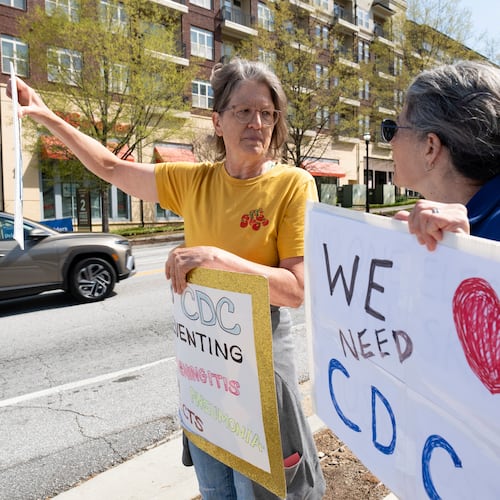The 53 headstones represent most likely only a fraction of the slaves buried on I-75.
The graves are what is known as the Gilbert Cemetery, once an acre of land at the Cleveland Avenue bridge. Thousands of commuters catch a glimpse of the headstones daily on a plot of Department of Transportation land, cut off from any visitors by the ramps of cloverleaf.
More than a few drivers must wonder who they are, but on a day when many people visit the graves of their deceased relatives, it seems timely to reflect on Gilbert Cemetery, where descendants are denied that chance. But the truth is that most of the dead there had been forgotten a long time ago. It took a road project and a controversy over Jesus to revive the memory.
The property once belonged to plantation owner Jeremiah Gilbert, who in 1861 set aside a portion for a cemetery for slaves and their family members, according to a federal court opinion. In the 1950s, the cemetery was destroyed by persons unknown, according to a historic marker, and by the early 198os, it was holding up a major DOT project on I-75 and the Cleveland Avenue ramps.
The DOT takes the position today that the concrete headstones don't necessarily even represent a burial site. Spokeswoman Jill Goldberg said the department isn't even sure that there are any dead either under the grass or the pavement.
"It is something of a mystery," Goldberg said. "They are ceremonial markers."
Lawyer Jeff Bramlett, who represented the descendants of the dead in the 1980s, said the DOT tried to run roughshod over the cemetery. He noted that road builders circumnavigated a white cemetery near the I-85 and Cleveland Avenue intersection.
"To me, the juxtaposition of those two decisions by the DOT is really odd," he said. "Why didn't they just bend the road where the land had a burial ground. The answer is that they thought they could get away with it. They acted like the cemetery didn't exist even though the evidence is pretty strong that they knew the cemetery was there."
Goldberg said the department halted the project after a contractor discovered a few headstones.
A federal court opinion, however, said that an investigation revealed that more than 1,000 people were buried there.
The investigation concluded burials took place for 100 years, but there were few headstones in 1980 to mark the graves, the court opinion said. Thirty-six families were identified as taking up lots, but "the names and descendants of those buried there generally were unknown," the opinion said.
The DOT had a good case for its claim of ignorance in some respects. A motel-liquor store had occupied the land until the department seized it. The owners believed the cemetery hurt their business and removed most of the headstones, said Senior Assistant Attorney General Charlie Richards, who represented the DOT on the case.
Richards said many of the graves had not been marked, but the DOT did find headstones inside the motel's basement. He suspected family members had been powerless to protect the cemetery.
"The people who were buried there were poor and they were black, and in the 1950s, you didn't question the white man," Richards said.
Both Richards and Bramlett ended up on the case after the DOT tried to placate the families with plans to erect a 7-foot granite statue of Jesus over the graveyard. The ACLU objected to the religious symbol, U.S. District Judge Marvin Shoob ruled the statue unconstitutional and the headstones with metal plates of known dead were erected instead.
Some descendants were satisfied with the "expressway Jesus" as a a memorial for the dead, Richards said; news stories indicated others objected to it being a "white Jesus," the controversy happening in the era in which Jesus' Ethiopian roots were front and center in the racial politics of the time.
"I remember going to this public meeting at this African-American church where I explained that the statue couldn't go up," Richards said. "There was this sweet-looking old lady who kept shaking her head, and she said, ‘I'm glad you're not my lawyer.'"
Shoob brokered the idea of commemorative headstones with names to work like markers in military cemeteries where a body's location is in question, Bramlett said.
He was disappointed to learn they were made of material similar to what composed I-75.
"It seems like they could have upgraded to granite," Bramlett said.
About the Author
The Latest
Featured
